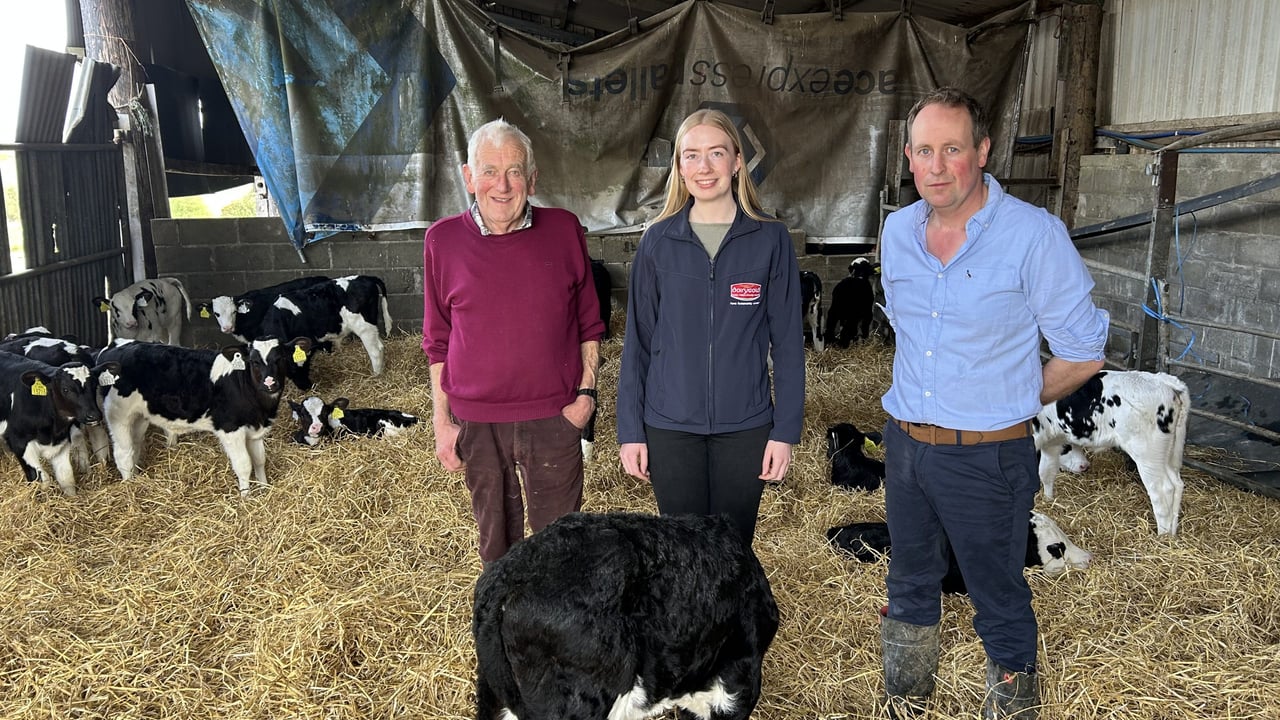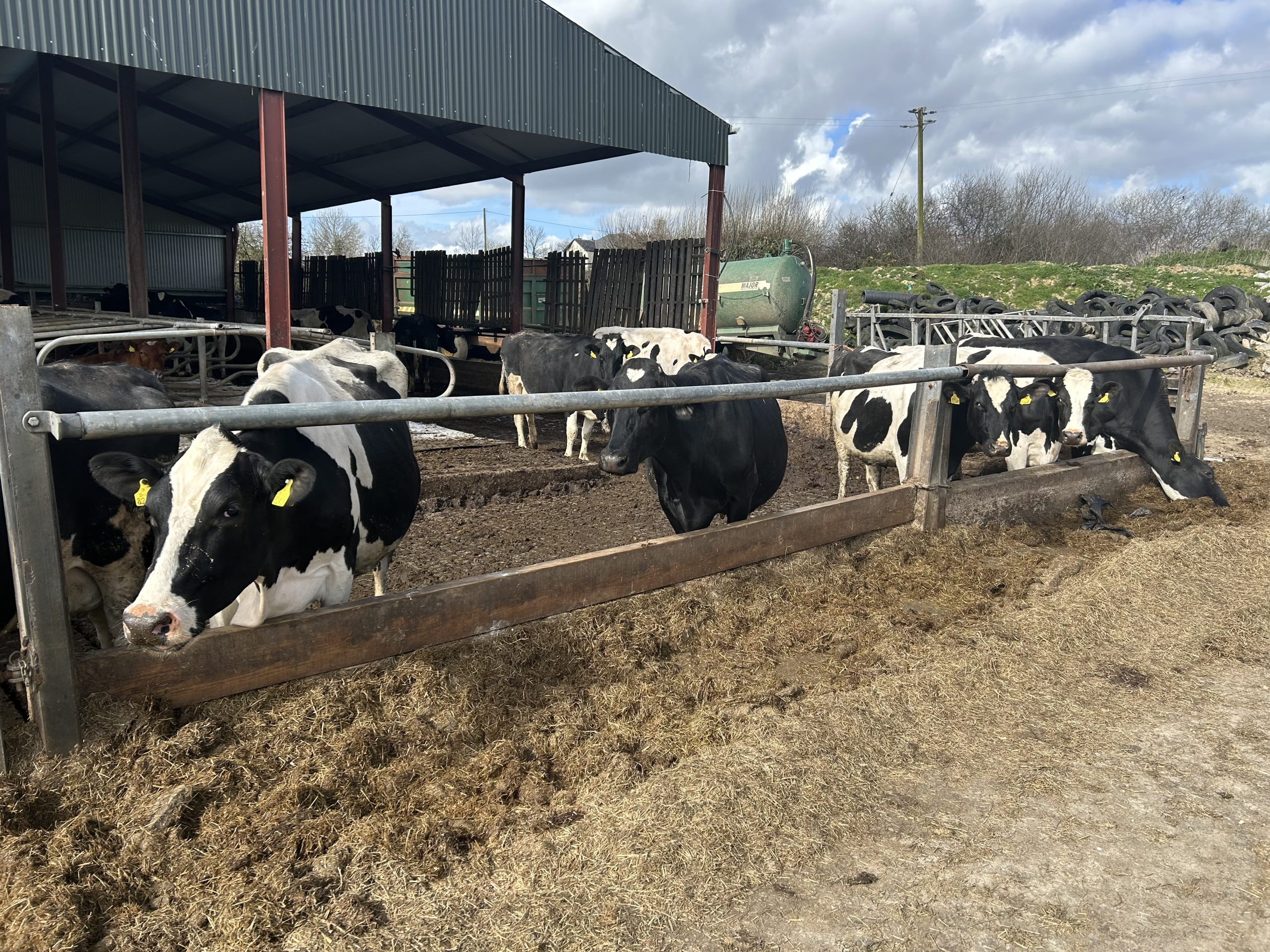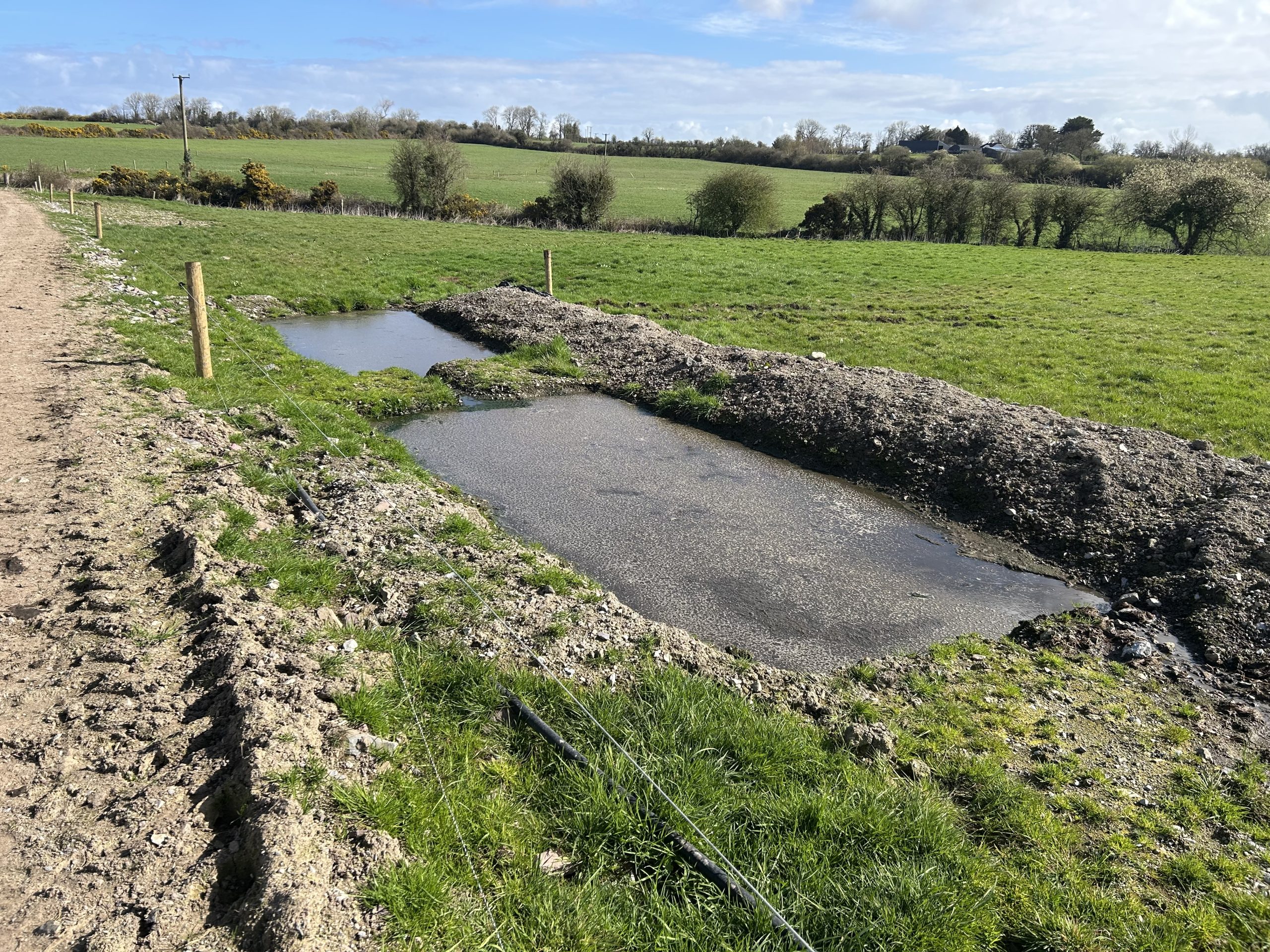River Blackwater Catchment Series


River Blackwater Catchment Series: EIP funding on Mallow farm
Agriland Media Group is delighted to collaborate with Dairygold to bring you the River Blackwater Catchment Series.
Dairygold farmers, Maurice and Dermot O'Connell are milking 160 cows this year just outside Mallow where they are driving efficiency through the 'Farming for Water' European Innovation Programme (EIP) funding.
The O'Connells have 100ha in tillage and 100ha in grass where 50ha of that is the grazing platform.
Maurice O'Connell was working off farm for 18 years and returned to work on the farm full-time in January 2024 and has ambitions to streamline production.
The farm is within the area of the River Blackwater Catchment Programme which is spearheaded by Dairygold. The programme will see the dairy processor partner with Teagasc and the Local Authority Water Programme (LAWPRO).
The O'Connell's herd of cows produced 7,600kg of milk per cow last year with 590kg of that being milk solids, feeding 1.5t/cow each year.
Last year, however, the O'Connells fed closer to 1.8t/cow of meal due to the poor weather and less than optimal growing conditions, with 300kg of that being in the form of soya hulls.

The aim in terms of breeding is to breed a cow with as high an economic breeding index (EBI) as possible as they try to replicate the University College Dublin (UCD) Lyon's Farm herd whereby they take a high EBI herd and "manage them like a Holstein" and "we treat her well".
The cows have been out by day since March 15 and are out full-time in the last week or two, and are currently getting 5kg of meal and 3kg of soya hulls.
The O'Connell's farm is a heavier soil type farm, which means phosphorus (P) run-off is an issue which needs constant control on farm.
The dung and about 200,000 gallons of slurry is moved off farm and onto the 20ha of spring barley and 5ha of maize in an attempt to manage that run-off, water contamination and wastage of valuable nutrients.
The O'Connells sat down with their Agricultural Sustainability Support and Advisory Programme (ASSAP) advisor to see where they could improve farmyard run-off and their P and sediment flow pathways.
Once this was identified, measures were put in place to break and barricade this run-off and catch the sediment.
An array of measures have been taken in the yard to separate slurry, parlour washings, clear water and dung which has allowed for more slurry and parlour washing storage and has allowed the O'Connells to go out spreading at optimal times as they are not stuck for space.
Three measures that the O'Connells have implemented on the farm, which is in the River Blackwater catchment area, to reduce the phosphorus run-off in the yard and on the land are a vegetated bunded drain, a farmyard bucket and brush and water bars to deflect the flow of run-off away from high risk areas.

The bunded drains help to maximise the retention of sediments and plant nutrients within ditches/drains and to create opportunities for infiltration of water into soils.
The bucket and brush is one of the most popular measures and is designed to sweep and collect debris in yards and laneways, protecting water quality by preventing run-off from manure and other pollutants.
The funded measures taken by the O'Connells, who are Dairygold suppliers, are as follows:
| Measures | Min | Max | Unit | Payment rate | |
|---|---|---|---|---|---|
| 1 | Rainwater Management plan | 1 | 1 | /plan | €250 |
| 2 | Farmer Training Course | 1 | 1 | /course | €156 |
| 3 | Nutrient Management plan | 1 | 1 | /plan | €400 |
| 4 | Nitrogen Surplus | 4 | 4 | /plan | €250 |
| 23 | Water Bars | 1 | 6 | /unit | €213 |
| 42 | Farmyard bucket and brush | 1 | 1 | 50% of cost to max of €2,000 | €2,000 |
| 43 | Slurry Testing | 1 | 4 | /farmer | €70 |
Maurice told Agriland that all the measures he implemented include improving the efficiency of the farmyard and the efficiency of the nutrients he is spreading, and by no means hindering production, but in fact, adding to it.
Methods such as slurry testing was something he was doing previously, but now Maurice is delighted to be getting paid to do it.
He said that the slurry testing and nutrient management plan is only adding to how efficiently he spreads his nutrients and slurry, at the right time in the right places, reducing N and P losses and maximising grass growth.
The farm currently has a nitrogen surplus of 168kg of N/ha which is similar to the national average of 158kg of N/ha and also has a P deficit of -1kg of P/ha which is below the average surplus of 10.6kg of P/ha.
This essentially means that more phosphorus is exported off the farm in the form of milk sales, calf sales and slurry export in comparison to what is retained on farm, which is ideal considering the soil on the farm is in index four for P.
They are also keeping their N surplus down which means they are efficiently utilising their slurry, fertiliser, grass and meal to produce nearly 600kg of milk solids per cow.
The O'Connells are planning on putting in additional slurry storage either in the form of a covered tower or a slatted tank despite having a lagoon in the yard and being comfortable for space.
However, Maurice told Agriland that he would rather enhance nutrient application efficiency, to have the power to go out spreading slurry in favourable conditions to maximise slurry efficiency and that the opportunity is there to do so with the 60% Targeted Agricultural Modernisation Scheme (TAMS) grant available.